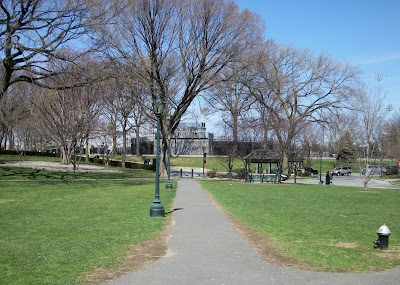"We have a great emphasis on care for the individual student; We have a great desire to introduce excellence and rigor into the classroom and every subject we teach; Third, we believe that students have to be invited to wrestle with the great ethical issues of their time. We want them to be bothered by the realization that they don’t know everything and bothered by injustice.”
—Joseph M. McShane, S.J., President of Fordham University
You are probably aware of the fact that Fordham is a Catholic, and specifically a Jesuit, University. Jesuit ideals, similar to those discussed by Fr McShane in the quote above, permeate almost every aspect of Fordham culture--from residence halls and clubs and activities, to classes and mission statements.
But, who are the Jesuits and why do they matter?
The Jesuits are men who belong to a Catholic religious order called the Society of Jesus. This group was founded by St. Ignatius of Loyola over 450 years ago.
There are about 21,000 Jesuit priests and brothers located around the world. About 3,800 of them are in the United States within 10 area Provinces. The Jesuit Communities at Fordham University make up the largest group of Jesuits within the New York Province found in one place.
While the main focus of the Jesuit Order is on education, they are also actively involved in parish work, spiritual direction, retreat centers, social justice projects, and foreign missions.
The Jesuit Community at Fordham University is part of the New York Province of the Society of Jesus and is actually composed of two communities associated with Fordham University (Spellman Hall and Loyola Hall), and one housing the Jesuits of Fordham Prep School (Kohlmann Hall). In addition the community at Ciszek Hall, is the home of the Jesuit Scholastics or Jesuits-in-training, and the New York Province's infimary is at Murray Weigel Hall.
Of the 83 Jesuit priests and brothers who reside in the Fordham Jesuit community, there are approximately 30 who are full time teachers or administrators at the University and 10 at the High School. Nine other Jesuits live in Manhattan and teach at Fordham's Lincoln Center campus. Approximately 10% of Fordham's faculty is made up of Jesuits--one of the highest percentages of Jesuit Universities in the US!
At Fordham, you will experience the same Jesuit approach to education that has challenged some of the world's greatest thinkers for more than 400 years. Jesuit educated notables have included Descartes, Molière, Alfred Hitchcock, Sting, James Joyce, Dee Dee Myers, and Captain Kangaroo.
The approach begins with a deep respect for you as an individual and your potential, a principle the Jesuits call cura personalis. Because they respect you, our faculty will challenge you to strive for ever greater personal excellence in all aspects of life — intellectual, emotional, moral and physical. That principle, called magis, accounts for the rigor of intellectual exchange and the varied challenges you will experience in New York City and the world beyond.
At Fordham, students seek to tap the full potential of mind and heart while leading a life beyond self. Each semester more than 600 Fordham undergraduates follow the Jesuit philosophy of homines pro aliis, men and women for others, by contributing their time and talent in service to the community: tutoring the disadvantaged; feeding and clothing the homeless; planning outings for an orphanage; and spending vacation periods in distant corners of the world, from New Mexico to Calcutta, as part of Fordham's Global Outreach Program.
On both the undergraduate and the graduate level, a Fordham education embraces rigorous scholarship and adherence to ethical values. The School of Law, internationally known for emphasizing ethics, also has several active pro bono programs. Students in the Graduate School of Business Administration make time in their busy schedules to assist non-profit organizations with business planning. The Graduate Schools of Education and Social Service both incorporate field work in the New York City area into their curriculum. The Graduate School of Arts and Sciences emphasizes critical thinking and communication, and is dedicated to helping students understand themselves and their world so that they may lead satisfying lives and contribute to their professions and society at large. The Graduate School of Religion and Religious Education is committed to preparing students of all denominations to confront contemporary problems of church communities, while helping to chart future directions through research.
True to its time-honored Jesuit traditions, Fordham endeavors to make excellence the focus of life, and the world the "home of the heart," of every student.

Some of Fordham's novice Jesuits.




















 T
T










